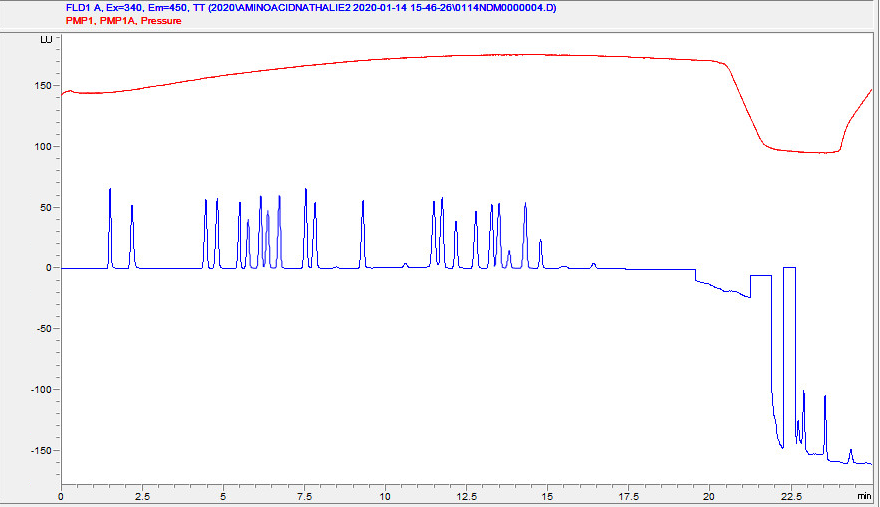Hi
We often run amino acid analysis with a HPLC FLD (G1321A). But recently we have some problems with our chromatograms.
For the detection of primary and secondary amino acids, a different excitation and emission wavelengt is needed. So for the analysis a timetable for the FLD signal is set up:
Recently we have noticed that, at 17,40 minutes, when the FLD switches its signal, it also causes a shift of the baseline in our chromatogram. Which means we are not able anymore to detect our secondary amino acids.
Does anybody has expercience with such a problem?
Thank you!
MV


